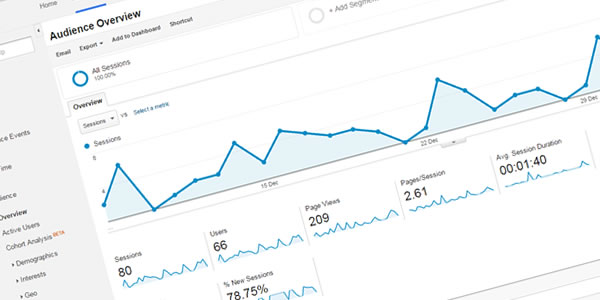So My Website is Live… What Next?
Posted on January 9th, 2016
This post is aimed at website owners (not developers) who are hopefully thrilled with their new site, but are unsure of how to get it out there for everyone to appreciate. I’m not going to get into Search Engine Optimisation (SEO) practices as that’s another subject.

This brief guide should give you some quick tips on what you can do, to increase traffic to your site (in the process improving its search ranking).
When a site is first launched on a new domain name, as far as Google is concerned it will not look very popular (having no traffic history and possibly no incoming links). Google’s search engine automatically crawls the web and picks up new sites, but this can take a while, and chances are when you first get crawled you will appear way down the list of pages.
Google Webmaster Tools:
This first step is best handled by your developer, who can create and submit an xml sitemap to Google Webmaster Tools. I normally do this as part of any website I develop and it can help a brand new site get picked up (indexed) by Google more quickly.
Incoming Links:
- Social sites – you may not use them personally, but every website can benefit from the incoming links offered from these high traffic behemoths: create Google + Page, Facebook Page, Twitter account, Instagram, etc. the more the merrier… Naturally when they’re up and running get your developer to place links on your own website back to them.
- Google Places (a.k.a. Google Maps) – if you have a physical premises which customers can visit, create a free Google Places listing. These always place highly in Google search results when a location is included in the search terms.
- Online Directories – submit your site to free online directories like yell.com or more local derivatives.
- Link exchange with other sites – contact any similar interest sites (not competitors) such as charities, blogs, suppliers or interest sites that would have a similar audience, ask them to link to your new site and you can link to theirs.
Hardcopy:
- Going to print? make sure you include the website url and email address (omit the www. – modern browsers can guess this part) place it legibly on any flyers, brochures, print adverts, business cards or vehicle signage.
Ongoing:
- Post to the Social accounts – continue posting on social sites to promote your website, the more followers on the various platforms you get the larger your audience becomes. Aim to create a post each month with relevant links to your website. Tip: Hoot Suite (https://hootsuite.com/) allows you to interact with several platforms (free version allows up to 3) at once and schedule future posts.
- New Content – search engines and visitors alike can get bored of seeing the same content. To keep people’s interest and encourage return visits – introduce some changing content like a blog or news section, when you add a post on the site – promote it with a link via your social accounts.
Paid Online Advertising:
The previous options have all been free – so make sure you’ve covered those areas first, but if you really want to boost traffic to your site you can go down the route of pay-per-click advertising. The big hitters are Google AdWords and Facebook Ads. Both allow you to:
- Create the advert text (make it a call to action and link to a relevant page on your site)
- Target a specific audience (could be a specific locale / age group)
- Set a budget limit (i.e. £30 a month), when this is reached the ad will no longer show
These can be particularly effective for boosting quiet periods of the year, or to promote a limited time offer.
Has it Made a Difference?
You may have studiously gone through the steps above, but be wondering “Is any of this making a difference?” well the best way to tell is to look at the traffic your site is getting and the behaviour of visitors. Cue:
Google Analytics

Again I tend to install Google Analytics tracking code to every site I make, but you may need to ask your developer to install it / give you access. It can be a bit overwhelming at first glance due to the sheer volume of information being collected, but the key things you’ll want to check is how visitors are getting to your site.
For example to see how your social sites are performing, from the menu on the left, select Aquisition -> All Traffic -> Channels. This should show you how many referrals you get from external sources – i.e. Facebook, Twitter. If you are using Google AdWords – these integrate automatically and will show you the stats from each advert conversion (click). This is just the tip of the iceberg of what Google Analytics can show you.